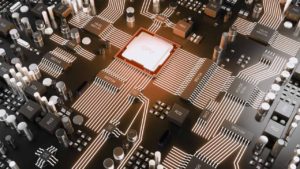The D.L.S. Conformity Assessment group supports Environmental testing for automotive and related transportation industry applications, such as electrical and electronic controls and modules, entertainment systems, lighting, inherent safety, materials, and other automotive equipment. This includes controls, components, modules and sub-assemblies for motorcycles, scooters, … [Read more...]
Heiland Electronics Announces Tech Expo in Salt Lake City
The Heilind Tech Expo will feature products from over 25 manufacturers in the electronics industry Heilind Electronics, a leading global distributor of electronic components, will host its next Tech Expo event in Salt Lake City, Utah on June 20. Attendees will have a chance to interact directly with personnel from over 25 leading manufacturers in the electronic components … [Read more...]
What is the Most Important EMC Design Guideline?
INTRODUCTION EMC design guidelines have always been a popular subject in the EMC design community. What is the most important EMC design guideline, i.e. the guideline with the highest impact on the emission and immunity of electronic circuitry? Studying books and literature from renowned EMC experts often tells us that the most important EMC design guideline is: … [Read more...]
Review of MIL-STD-461 CS116 Damped Sinusoidal Transients, Cables and Power Leads
Introduction In this article, I am delving into the evolvement of CS116 testing, the background, the purpose and how the testing is approached today. The test title is, “Conducted Susceptibility, Damped Sinusoidal Transients, Cables and Power Leads”. MIL-STD-461 assigns applicability to a broad variety of applications and states the purpose is to verify the ability of the … [Read more...]
Review of MIL-STD-461 RE103 Antenna Spurious and Harmonic Outputs
Introduction Technology frequently embeds transmitters in a myriad of devices to support an Internet Of Things (IoT) concept from identification to condition-based actions, and this IoT approach includes defense operations. Devices may include multiple transmitters that a few years ago did not include communications of any sort. Inclusion of RF transmitters has prompted a … [Read more...]
Verotec KM6-HD rugged subrack conforms to MIL STD 167
Designed for use in rail, military, aerospace and other harsh operating environments where electronic equipment will be subject to shock and vibration during use, the ruggedized KM6-HD subrack system, designed to meet MIL-STD-167, the US Department of Defense Test Method Standard, is the latest development of the versatile KM6 subrack family from Verotec. Available as … [Read more...]
Is Electric Equipment Grounding the Basic Protection Means Against HEMP?
Abstract The article discusses the differences between the electromagnetic pulses at lightning (LEMP) and at high altitude nuclear explosion (NEMP or HEMP). The article also shows that these differences do not allow to transfer LEMP experience on to NEMP. The author questions the effectiveness of grounding of electronic equipment as the main protection principle against … [Read more...]
Be Careful with Low Cost/Quality Common Mode Chokes ….
Dear readers, I have been really busy working in training and EMI troubleshooting in the past months. I am happy to be here again with a new post. This month we will see a topic from a real-world situation - very interesting - for electronic designers working in conducted emissions problems. In one of the projects I was involved with several weeks ago, a product was … [Read more...]
Review of MIL-STD-461 CS103 Intermodulation, CS104 Rejection of Undesired Signals and CS105 Cross-Modulation
Introduction Rapid technology advances in the wireless communications world make test and evaluation of Radio Frequency (RF) devices a difficult subject. It seems that by the time a new device hits the market, it has been made obsolete by the next generation. I recall hearing from a major electronics manufacturer CEO that 90% of sales happen within 90-days of market release … [Read more...]
Electrostatic Discharge (ESD) in Electro-Optic Devices
Many electronic components used in highly technological devices can be damaged or degraded by sudden electrostatic discharges, known by the term Electrostatic Discharge (ESD). Components such as transistors, diodes, laser diodes, electro-optical devices, and a variety of integrated circuits are all sensitive to electrostatic discharge. Many manufacturers are increasingly … [Read more...]
- « Previous Page
- 1
- …
- 26
- 27
- 28
- 29
- 30
- …
- 270
- Next Page »












